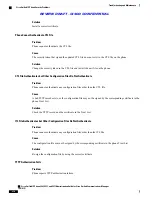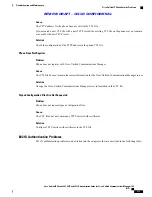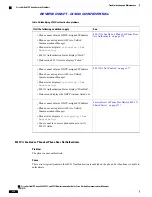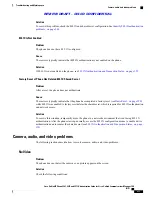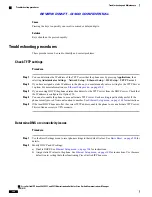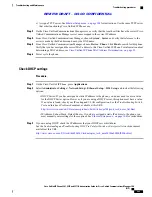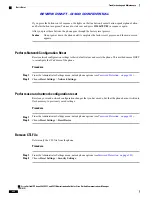
Enable phone debugging
If you are experiencing phone problems that you cannot resolve, Cisco TAC can assist you. You will need to
turn debugging on for the phone, reproduce the problem, turn debugging off, and send the logs to TAC for
analysis.
When the Log Server cannot be reached, the phone stops sending debug messages.
Note
Because debugging captures detailed information, the communication traffic can slow down the phone, making
it less responsive. After you capture the logs, you should turn debugging off to ensure phone operation.
Contact Cisco TAC for more information and assistance.
Procedure
Purpose
Command or Action
In Cisco Unified Communications
Manager Administration, navigate to one
of the following windows:
Step 1
•
Device
>
Device settings
>
Common Phone
Profile
•
System
>
Enterprise Phone Configuration
•
Device
>
Phone
Select the phone to be debugged.
Step 2
To turn debugging on, set the following
parameters
Step 3
•
Log Profile - values: Preset (default), Default,
Telephony
•
Remote Log - values: Disable (default), Enable
•
IPv6 Log Server or Log Server - IP address (IPv4
or address)
IP addresses can include a port. The format for IPv6
Log Server or Log Server is
[address]:<port>@@base=<0-7>;pfs=<0-1>.
The debug information may include a single digit code
that reflects the severity of the situation. Situations are
graded as follows:
•
0 - Emergency
•
1 - Alert
•
2 - Critical
•
3 - Error
•
4 - Warn
•
5 - Notification
•
6 - Information
Cisco Unified IP Phone 8961, 9951, and 9971 Administration Guide for Cisco Unified Communications Manager
10.0 (SIP)
288
Troubleshooting and Maintenance
Troubleshooting procedures
REVIEW DRAFT - CISCO CONFIDENTIAL

